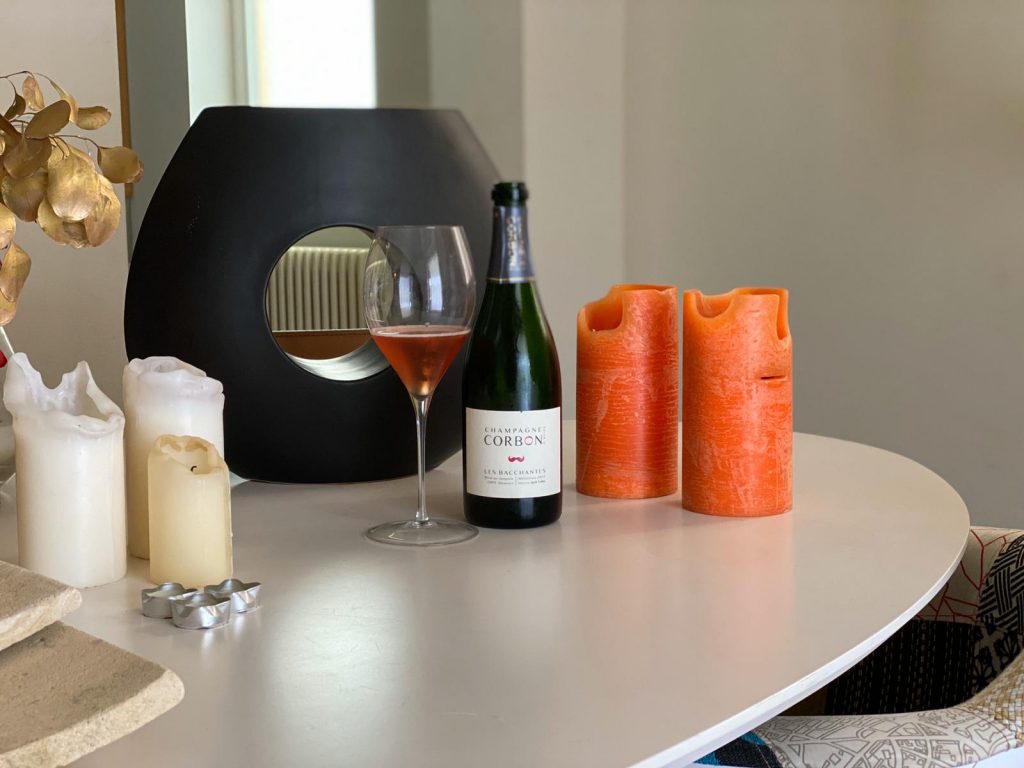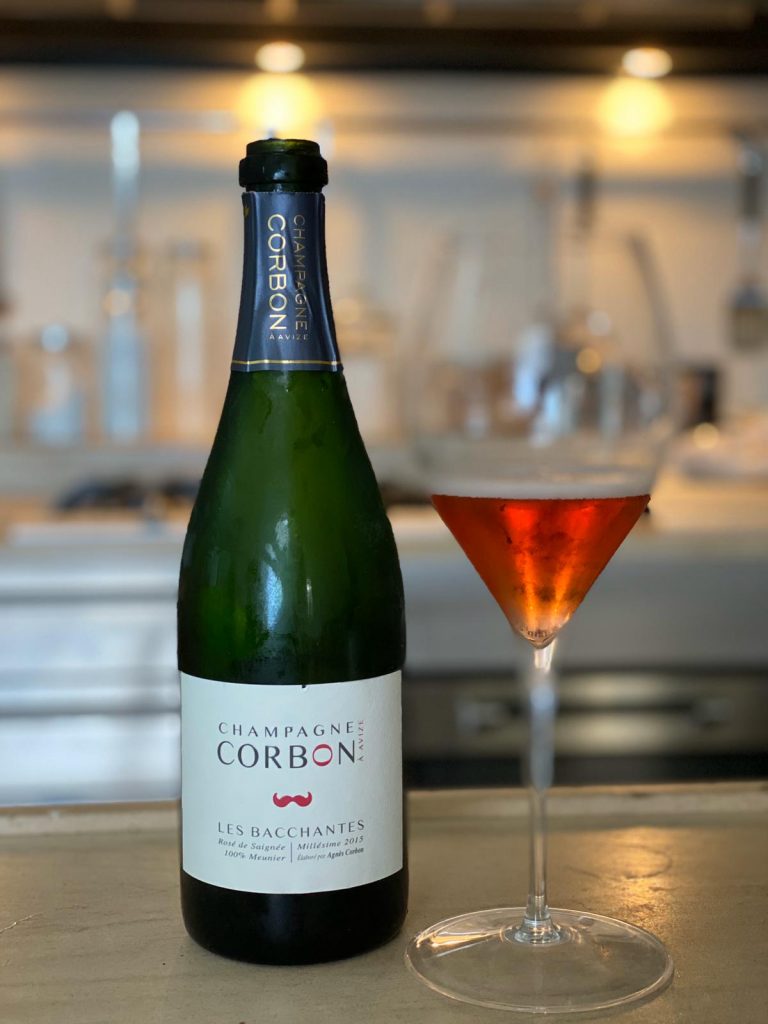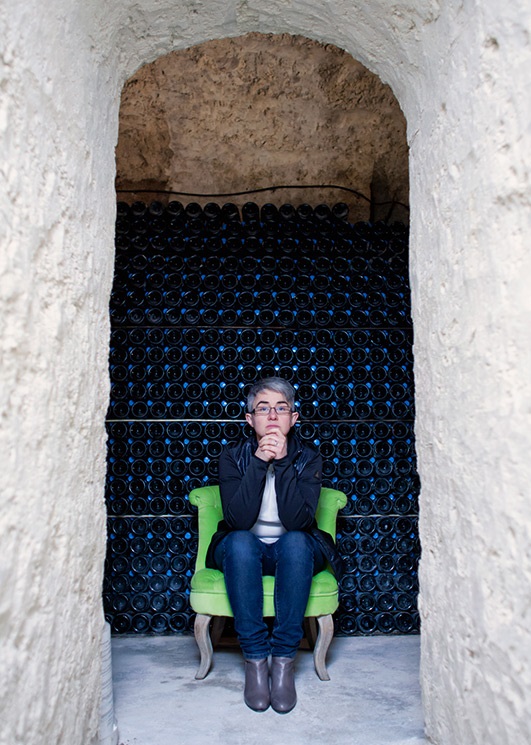28 Maggio 2020

Corbon Les Bacchantes Rosé: i “baffi rosa” di suo padre
Per la storia di questa incantevole bollicina rosa, ci siamo rivolti alla sua creatrice, Agnès Corbon, che gestisce una piccola azienda vinicola a conduzione familiare nel villaggio di Avize, nella Côte de Blancs in Champagne. Come riportato in un recente numero della Newsletter di Heres, Agnès ha sempre seguito il principio del padre Claude secondo cui il blanc de blancs beneficia di una lunga maturazione sui lieviti per dare allo Chardonnay il massimo della finezza e dell’eleganza.
Poi, in uno slancio di fantasia, Agnès ha deciso di fare qualcosa di diverso e ha creato Les Bacchantes Rosé. Come lei stessa spiega: “Per molto tempo non ho fatto il rosé perché mi sono sempre vista come una ‘Chardonnay girl’. Ma nella primavera del 2015 ho assaggiato il rosé de saignée del mio amico e collega Tomithé Stroebel e mi sono innamorata del suo frutto croccante. Così ho deciso alla prima occasione di provare a fare un piccolo lotto di rosé. La vendemmia del 2015 è stata splendida, le uve di Pinot Meunier erano mature e belle, così ho fatto un tentativo. Ho scelto un appezzamento esposto a sud, a Trélou-sur-Marne, chiamato ‘Les Vignes d’Avize’, perché le rese sono più basse e le uve più mature che in qualsiasi altra mia parcella di questa varietà.”

Il vino proviene da uve Pinot Meunier al 100% vinificate secondo il metodo “saignée” o “salasso” con la spillatura del mosto fiore dopo 18 ore di macerazione sulle bucce, seguita dalla fermentazione in botti di rovere e una maturazione di 10 mesi sempre in legno dove completa la fermentazione malolattica. Nessuna chiarifica, filtrazione o stabilizzazione a freddo prima dell’imbottigliamento avvenuto nel settembre del 2016 per dare l’avvio alla seconda fermentazione.
“Amo questo vino, che è diverso da tutti quelli che ho fatto”, dice Agnès. “Cercavo una concentrazione di frutta rossa croccante e con quelle splendide uve per cominciare e con un po’ di fortuna ci sono riuscita. Ho prodotto due botti per un totale di 615 bottiglie. Da allora non ho più fatto il rosato. Ci ho provato nel 2018, ma non ero contenta e non l’ho imbottigliato. Non vedo l’ora di farne altri; chissà, magari nel 2020.”
Ma che dire di quel nome Bacchantes, che in francese comune si riferisce ai baffi, o in questo caso a un rosé dal baffo rosa?

Agnès ha spiegato che a un certo punto stava cercando un nome per le sue cuvée d’annata che aveva iniziato a vinificare in botti borgognotte, così suo padre Claude, che da poco si era fatto crescere un paio di baffi che non le piacevano affatto, ha suggerito scherzosamente: Les Bacchantes!
“Beh, mi sono detta, non chiamerò mai i miei vini ‘Baffi’, ma in qualche modo l’idea ha preso piede, e dopo un po’ di riflessione ho ceduto e ho detto OK, Les Bacchantes sia.”
Il nome è stato usato per la prima volta per un blanc de blancs d’annata vinificato in legno e maturato per oltre cinque anni sui lieviti. Evidentemente questo appellativo le è cresciuto addosso, perché quando è arrivato il momento di dare un nome al suo nuovo vino è diventato Les Bacchantes Rosé.Per mantenere la sua freschezza vibrante, Agnès ha limitato il processo di produzione di questo Champagne a tre anni sui lieviti invece dei soliti cinque o più.
Quando le ho chiesto di descrivere la sua creazione, Agnès è ricorsa alla sua classica ironia e modestia: acidulo con note fruttate di fragola e mirtillo rosso, un “rinfrescante per la bocca”, suggerendo di servirlo da solo come aperitivo, possibilmente in caraffa. Certo, un rinfrenscante per la bocca! Nella mia opinione i “baffi rosa” di papà esalterebbero anche i sapori di gran parte dell’ampia proposta di stuzzichini che i francesi chiamano amuse-gueules.
ENGLISH
Corbon Les Bacchantes Rosé: Her father’s ‘pink moustache’
For the story behind this enchanting pink sparkler, we turned to its creator, Agnès Corbon, who runs a small family winery in the village of Avize in Champagne’s Côte de Blancs. As reported in a recent issue of the Heres Newsletter, Agnès always followed the principle of her father Claude that blanc de blancs benefits from long maturation on the lees to give Chardonnay the utmost in finesse and elegance.
Then, on a whim, Agnès decided to do something different and created Les Bacchantes Rosé. As she explains: “For a very long time, I didn’t make rosé because I always saw myself as a Chardonnay kind of girl. But in the spring of 2015, I tasted the rosé de saignée of my friend and colleague Tomithé Stroebel and fell in love with the crispy fuitiness. So I decided at the first opportunity I would try to make a small batch of rosé. The 2015 harvest was gorgeous, the Meunier grapes were ripe and beautiful, so I gave it a try. I chose a south-facing plot of Meunier in Trélou-sur-Marne called “Les Vignes d’Avize” because yields are lower and grapes more mature than in any other of my Pinot or Meunier plots.
The wine came from 100% Meunier grapes vinified following the saignée or “bleeding” method of drawing off the musts after 18 hours of maceration with the skins, followed by fermentation in oak barrels and élevage of 10 months in oak and complete malolactic fermentation. No fining, filtering or cold stabilization before the wine was put in bottles in September 2016 to undergo the second fermentation of three years.
“I do love this wine, which is different from any I’ve ever made,” says Agnès. “I was looking for crisp red fruit concentration and with those gorgeous grapes to start with and a bit of luck I achieved just that. I made two barrels for a total of 615 bottles. I haven’t made rosé since. I tried in 2018, but I wasn’t happy and didn’t bottle it. I certainly look forward to making some more; who knows, maybe in 2020!”
But what about that name Bacchantes, which refers to moustache, or as a rosé to a pink moustache?
Agnès explained that at one point she was looking for a name for her vintage cuvées that she had begun vinifying in Burgundy barrels, so her father Claude, who had recently grown a moustache that she thoroughly disliked, jokingly suggested: Les Bacchantes! “Well, I said, no way I’m going to call my wines ‘Moustache,’ but somehow the idea caught on, and after some contemplation I gave in and said OK, Les Bacchantes it is.”The name was first applied to a vintage blanc de blancs vinified for a minimum of five years on the lees. It obviously grew on her, because when it came time to name her new wine it became Les Bacchantes Rosé.To maintain its bouyant freshness, Agnès limited the Champagne process to three years instead of the usual five or more.
When asked to describe her creation Agnès resorted to customary ironic understatement: acidulous with fruity notes of strawberry and cranberry, a “mouth freshener,” suggesting that it be served on its own as an aperitif, possibly in caraffe.Mouth freshener indeed. My take is that father’s “pink moustache” would glorify the flavors of almost any item in that grand array of tidbits that the French call amuse-gueules.